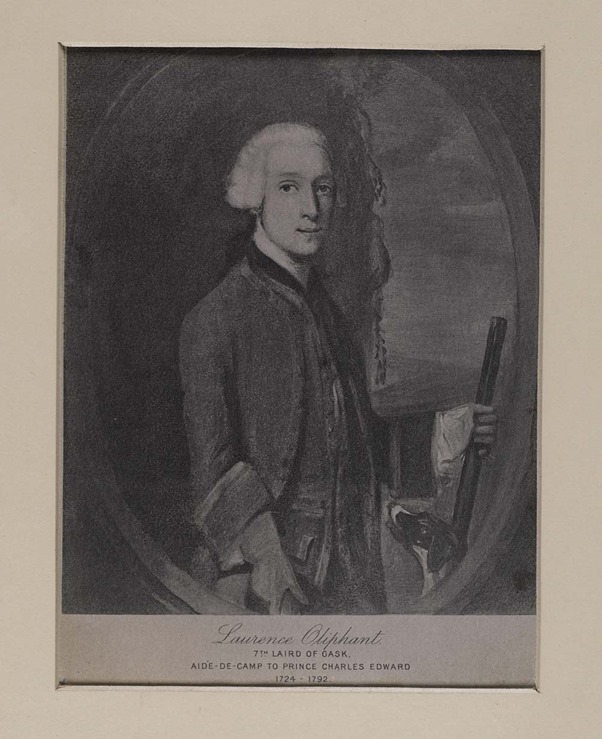Perthshire is generally considered the homeland of the Oliphant Clan (see Middle Ages for a Clan Map.) The principle seat of Clan Oliphant in early times was Aberdalgie (according to one history, drawn up by Sir George MacKenzie, Donald Holifard, the shipwrecked nobleman (see Early History) was granted the lands of Aberdalgie by King Donald the first in 830). It seems most likely that Aberdalgie came into the family in 1183, ten years after Sir Walter Olifard married the daughter of the Earl of Strathearn. It is in the church at Aberdalgie where Sir William Olifard, defender of Stirling Castle rests. Over the years, the adjoining estate of Dupplin was added and in due course Dupplin Castle became the main residence from where the Lords Oliphant controlled their vast estates. Along with the Chiefly branch at Aberdalgie & Dupplin, many branches of the Oliphants had their seats in Perthshire, including the Oliphants of Gask, Condie, and Rossie. Here the Oliphants encountered many other clans with which they had relationships (through marriage or otherwise), including the Campbells, the Grahams, the Murrays, the Drummonds, the Stewart’s of Atholl, and the Robertsons (or Clan Donnachaidh). Lands in Perthshire were granted to Sir William Oliphant (cousin of the defender of Stirling Castle) by King Robert I. Here the Oliphant’s gained the lands that would be the longest held by the Clan, Gask, and Aberdalgie (from which many of the Oliphant Chiefs took their territorial designation in the 14th and 15th century’s; e.g. Sir John Oliphant of Aberdalgie) and others.
Gask was originally Findogask, after the saint of the local church St. Findoc. Gask is Gaelic, meaning “nook” or “hollow”. Presumably, the name originally meant “the hollow of St. Findoc” or something to that effect.
The Gask estate was forfeit after after Culloden. Laurence Oliphant of Condie first managed the lands for the Forfeit Estates Commission and then leased the estate and then eventually purchased it (not without a certain amount of collusion, as Robert Oliphant of Rossie was on the Commision.) Half of the Gask estate then had to be sold to limit Condie’s debt. In his will, Condie only left the life-rents of Gask to the Gask family. In the meantime, Laurence Oliphant, 7th Laird of Gask (who had escaped to France after Culloden,) was then duly reinstated.

Laurence Oliphant, Younger of Gask (later 7th Laird of Gask)
Lands near Blairgowrie are now owned by the current chieftain of the Gask branch, Laurence Kington Blair Oliphant, who is the owner of Ardblair Castle (see more on Laurence Kington Blair Oliphant; Links). Although Ardblair Castle is technically a Blair seat and not Oliphant at all, it is by many considered as such and is where the majority of Oliphant historical artifacts are still held, through the fortunes of safe keeping and subsequent vagaries of inheritance.







